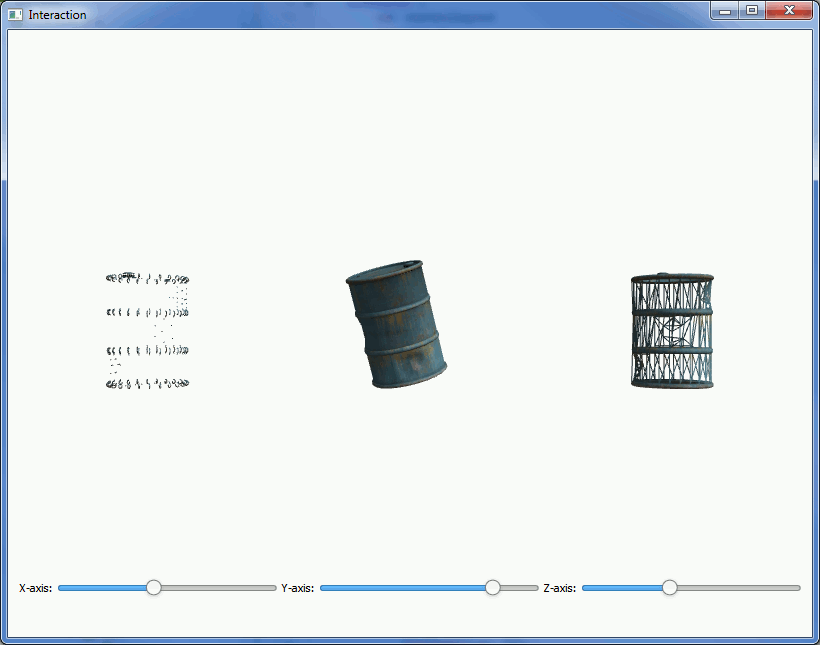The Interaction Example concentrates on the interaction between Qt Quick Controls and the objects displayed in Canvas3D . This also demonstrates drawing the same object in three different ways.

First, we need to import Qt Quick Controls and Layouts:
import QtQuick.Controls 1.0 import QtQuick.Layouts 1.0
Then, we add a RowLayout to the main component to easily add the controls side-by-side:
RowLayout { id: controlLayout spacing: 5 x: 12 y: parent.height - 100 width: parent.width - (2 * x) height: 100 visible: true
And then we add three sliders to the layout. Here's the one for controlling x-axis rotation:
Slider { id: xSlider Layout.alignment: Qt.AlignLeft Layout.fillWidth: true minimumValue: 0; maximumValue: 360; onValueChanged: canvas3d.xRotSlider = value; }
First we need to define some properties in the Canvas3D for the rotations:
property double xRotSlider: 0 property double yRotSlider: 0 property double zRotSlider: 0
The
onValueChanged
signal handlers of the
Slider
components are connected to the above properties. Here's the connection in x-rotation slider as an example:
onValueChanged: canvas3d.xRotSlider = value;
Then, on the JavaScript side, we just use the Canvas3D properties directly when setting the modelview matrix rotations:
mvMatrix = mat4.rotate(mvMatrix, mvMatrix, degToRad(canvas.xRotSlider), [1, 0, 0]); mvMatrix = mat4.rotate(mvMatrix, mvMatrix, degToRad(canvas.yRotSlider), [0, 1, 0]); mvMatrix = mat4.rotate(mvMatrix, mvMatrix, degToRad(canvas.zRotSlider), [0, 0, 1]);
The actual drawing is no different from any situation where the same object is drawn multiple times. Only in this case we use a different drawing mode for each:
gl.drawElements(gl.TRIANGLES, theModel.count, gl.UNSIGNED_SHORT, 0); ... gl.drawElements(gl.POINTS, theModel.count, gl.UNSIGNED_SHORT, 0); ... gl.drawElements(gl.LINES, theModel.count, gl.UNSIGNED_SHORT, 0);
文件: